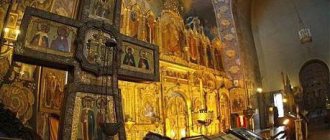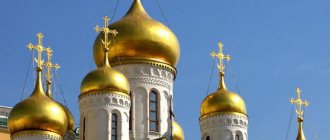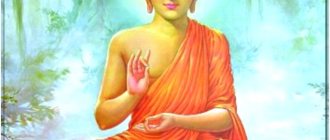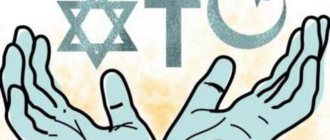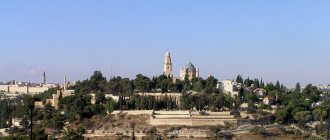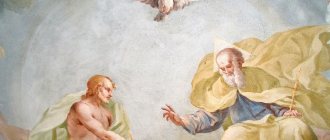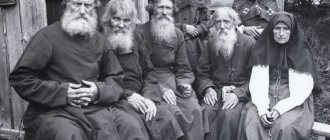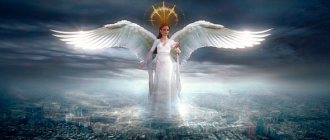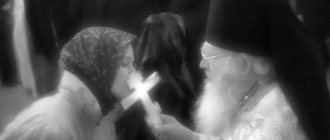Christianity is multifaceted and is one of the three major world religions along with Buddhism and Islam. All Orthodox Christians are Christians, but not all Christians adhere to Orthodoxy. Christianity and Orthodoxy: what is the difference? I asked this question when a Muslim friend asked me about the difference between the Orthodox and Baptist faiths. I turned to my spiritual father and he explained to me the difference in confessions.
What is Orthodoxy
Orthodoxy is one of the three main trends in Christianity (along with Catholicism and Protestantism), which developed in the first millennium after Christ on the territory of the Eastern Roman Empire (Byzantium). It ranks third in number (about 300 million people) among Christian movements after Catholicism (1.25 billion) and Protestantism (800 million).
The very word “Orthodoxy” (calque from Greek ὀρθοδοξία) literally means “correct glorification” or “correct opinion.” The word is translated from Greek as “orthodoxy.” In the Russian translation there is an association with the word “right” or “correctly”. Although in Greek "orthos" means "straight" or "right". That is, the direct path to the Lord: you do not turn either to the right or to the left. And the word “doxia” means “opinion” or “thought.” Therefore, Orthodoxy is correct thoughts about God. This is the translation.
When Orthodoxy appeared: a brief history
The term originated in the 4th century. In general, the Orthodox Church comes from the apostles. It's just that in ancient times there was a different word. What we call Orthodoxy was called piety in the days of the first Christians. In the ancient sense, piety is the proper reverence of God. It’s just that the definition of the Orthodox Church has changed. This is all one reality, which does not include false teachings. And since the first century there have been divisions within Christianity. The Church does not know a single period when everyone was united.
In Russian history, starting from the baptism of Rus' in the 10th century, the church was associated with state power. And church leaders (initially metropolitans, and from 1589 patriarchs) were always part of the tsar’s inner circle. Orthodoxy was the dominant denomination.
For more than four centuries, Russians lived under the unspoken rule of the Byzantine Church. However, the Moscow church claimed its own exclusivity, and in 1448 the Moscow priests declared their own independence, not recognized by Constantinople and the rest of the world in general. And after another 140 years, the new church had an official head - the patriarch.
With the fall of the monarchy, a period of testing began for the Russian Church. With the beginning of the revolution in Russia, a policy of forcibly imposing atheism unfolded. The result was the looting of many temples.
State pressure on the church weakened in the last months of 1941, after a series of military failures by Soviet troops in the war with Germany. The war of 1941–1945 united believers and non-believers.
After the collapse of the USSR in 1991, the Russian Orthodox Church began to revive, and at the same time, the persecution of believers, widespread in Soviet times, ceased. The revival of the old ones began (about 1.5 thousand survived out of the 50 thousand that existed before the 1917 revolution) and the construction of new Christian churches.
Bottom line
A Christian is a person who recognizes the death and resurrection of the God-man Jesus Christ, believes in posthumous existence and eternal life. However, Christianity is not homogeneous in its structure and is divided into many different denominations. Orthodoxy and Catholicism are the leading Christian faiths, on the basis of which other confessions and movements were formed.
In Russia, the Old Believers broke away from the Orthodox branch; in Europe, much more different movements and configurations formed under the general name of Protestants. Bloody reprisals against heretics, which horrified peoples for many centuries, are a thing of the past. In the modern world, peace and harmony reign between all Christian denominations, however, differences in worship and dogma remain.
The issue of religion is discussed and studied in every state and society. In some places it is especially acute and is quite conflicting and dangerous, in others it is more like small talk in free time, and in others it is an occasion to philosophize. In our multinational society, religion is one of the most pressing issues. Not every believer is well aware of the history of Orthodoxy and its origins, but when asked about Orthodoxy, we will all answer unequivocally that Orthodoxy is the Christian faith.
What Orthodox Christians Believe: Basic Provisions of Christianity
There are four main points in dogmatics. The first is belief in the Trinity: Father, Son and Holy Spirit. For us these are not three gods. These are not three masks of the same deity. These are three divine personalities between whom there is relationship and communication. And this relationship is love. This is where the main Christian commandment comes from - love. After all, we are created in the image and likeness of God.
Second, Christ is God and man. Why is it important? God is invulnerable. And here he took on human flesh and soul to make himself vulnerable. To experience human suffering: both physical and mental. This brings God closer to us. And the practical application is that when we turn to the Lord in prayer, he understands us, because he felt it all here on earth.
Third is belief in the resurrection. Christ, after being crucified on the cross, descended into hell and conquered death. He was resurrected in the flesh. And we believe that we will be resurrected in the flesh like Christ after his second coming. We believe that we will enter eternal life with both soul and body. Therefore, physical exploits are also important in spiritual life. For example, marital fidelity. Our body is a temple of the Holy Spirit. It belongs to Christ and the wife. No one else.
Fourth is faith in the church. Christians believe that it is impossible to come to God without church. It's not about the building. You need to get closer to other people. The fact that we gather together for prayer in church is the most important moment. You cannot approach God by moving away from other people.
Attitudes towards other religions
Orthodoxy is tolerant of confessors of other religions
. However, without condemning and peacefully coexisting with them, this movement recognizes them as heretical. It is believed that of all religions, only one is true; its confession leads to the inheritance of the Kingdom of God. This dogma is contained in the very name of the movement, indicating that this religion is correct and opposite to other movements. Nevertheless, Orthodoxy recognizes that Catholics and Protestants are also not deprived of the grace of God, since, although they glorify Him differently, the essence of their faith is the same.
By comparison, Catholics consider the only possibility of salvation to be the practice of their religion, while others, including Orthodoxy, are false. The task of this church is to convince all dissenters. The Pope is the head of the Christian church, although this thesis is refuted in Orthodoxy.
The support of the Orthodox Church by secular authorities and their close cooperation led to an increase in the number of followers of the religion and its development. In a number of countries, Orthodoxy is practiced by the majority of the population. These include:
In these countries, a large number of churches and Sunday schools are being built, and subjects dedicated to the study of Orthodoxy are being introduced in secular educational institutions. Popularization also has a downside: often people who consider themselves Orthodox have a superficial attitude towards performing rituals and do not comply with the prescribed moral principles.
You can perform rituals and treat shrines differently, have different views on the purpose of your own stay on earth, but ultimately, all who profess Christianity are united by faith in one God
. The concept of Christianity is not identical to Orthodoxy, but includes it. Maintaining moral principles and being sincere in your relationships with Higher Powers is the basis of any religion.
Differences between Orthodoxy and Catholicism
The final division of the United Christian Church into Orthodoxy and Catholicism occurred in 1054. However, both the Orthodox and Roman Catholic churches consider themselves only “one holy, catholic (conciliar) and apostolic Church.”
The main differences between Orthodoxy and Catholicism can be reduced to several points:
- So, the first difference between the Catholic and Orthodox Churches is the different understanding of the unity of the Church. For the Orthodox it is enough to share one faith and sacraments; Catholics, in addition to this, see the need for a single head of the Church - the Pope;
- The Catholic Church confesses in the Creed that the Holy Spirit proceeds from the Father and the Son (“filioque”). The Orthodox Church confesses the Holy Spirit emanating only from the Father. Some Orthodox saints spoke about the procession of the Spirit from the Father through the Son, which does not contradict Catholic dogma.
- The Catholic Church professes that the sacrament of marriage is for life and prohibits divorce, while the Orthodox Church allows divorce in some cases.
- The Catholic Church proclaimed the dogma of purgatory. This is the state of souls after death, destined for heaven, but not yet ready for it. There is no purgatory in Orthodox teaching (although there is something similar - ordeal). But the prayers of the Orthodox for the dead suggest that there are souls in an intermediate state for whom there is still hope of going to heaven after the Last Judgment;
- The Catholic Church accepted the dogma of the Immaculate Conception of the Virgin Mary. This means that even original sin did not touch the Mother of the Savior. Orthodox Christians glorify the holiness of the Mother of God, but believe that she was born with original sin, like all people;
- The Catholic dogma of Mary's assumption to heaven body and soul is a logical continuation of the previous dogma. The Orthodox also believe that Mary resides in Heaven in body and soul, but this is not dogmatically enshrined in Orthodox teaching.
- The Catholic Church has accepted the dogma of the primacy of the Pope over the entire Church in matters of faith and morals, discipline and government. The Orthodox do not recognize the primacy of the Pope.
- The Catholic Church has proclaimed the dogma that the Pope is infallible in matters of faith and morals when he, in agreement with all the bishops, affirms what the Catholic Church has already believed for many centuries. Orthodox believers believe that only the decisions of the Ecumenical Councils are infallible.
- Orthodox Christians cross from right to left, and Catholics cross from left to right. Catholics were long allowed to be baptized in either of these two ways until Pope Pius V ordered them to do so from left to right and no other way in 1570. With such a movement of the hand, the sign of the cross, according to Christian symbolism, is considered to come from a person who turns to God.
Protestantism
What is the difference between Protestant Christians and Orthodox Christians? This movement originated in the Catholic Church as a protest against the power of the Pope (he is considered the ruler of Jesus Christ on earth). Many people know the tragic night of St. Bartholomew, when Catholics in France dealt with the Huguenots (local Protestants). These terrible pages of history will forever remain in people's memory as an example of inhumanity and madness.
Protests against the power of the Pope swept across Europe and even resulted in revolutions. The Hussite wars in the Czech Republic and the Lutheran movement are just a small hint of the widespread protest against the dogmas of the Catholic Church. Brutal persecution of Protestants forced them to flee Europe and seek refuge in America.
What is the difference between Protestants and Catholics and Orthodox? They recognize only two church sacraments: baptism and communion. Baptism is necessary for a person to join the church, and the sacrament helps strengthen faith. Protestant priests do not enjoy undisputed authority, but they are brothers in Christ. At the same time, Protestants recognize apostolic succession, but attribute it to spiritual action.
Protestants do not perform funerals for the dead, do not worship saints, do not pray to icons, do not light candles, and do not burn censers. They lack the sacrament of marriage, confession and priesthood. The Protestant community lives as one family, helps those in need and actively preaches the Gospel to people (missionary work).
Services in Protestant churches are held in a special way. First, the community glorifies God through song and (sometimes) dance. Then the pastor reads a sermon based on biblical texts. The service also ends with praise. In recent decades, many modern evangelical churches have been formed with the participation of young people. Some of them are recognized as sects in Russia, but in Europe and America these movements are allowed by official authorities.
In 1999, a historic reconciliation between the Catholic Church and the Lutheran movement took place. And in 1973, the Eucharistic unity of the Reformed churches with the Lutheran churches took place. The 20th and 21st centuries have become a time of reconciliation of all Christian movements, which cannot but rejoice. Hostility and anathemas became a thing of the past, and the Christian world found peace and tranquility.
Basic sacraments of Orthodoxy
The first is the sacrament of Baptism, in which we are united with Christ. Because immersion in water is a symbol of death, just as the Savior died and was buried. When a person is raised from the water, it is a symbol of resurrection. And the threefold immersion is performed in the name of the Holy Trinity.
The second is the sacrament of confirmation. In it, a person is given the gift of the holy spirit. It takes place after baptism. And the goal of a person’s life is to develop this gift in oneself.
Third – Communion or Eucharist. Through it, the connection formed between a person and Christ during Baptism is maintained throughout life.
Fourth - confession. It helps a person get rid of sins for further work on himself.
Fifth - wedding. It makes husband and wife one.
Major Orthodox holidays
Almost everyone knows that the main Orthodox (and Christian in general) holiday is Easter. However, along with it, there are several other significant dates.
Easter
The Feast of Feasts, or “great day,” is Easter, commemorating the resurrection of Jesus Christ from the dead. The oldest of all Christian holidays was celebrated by the apostles, and it was they who bequeathed to celebrate Christian Easter on the first Sunday after the vernal equinox, a week after the Jewish Passover. The dates for celebrating Easter and other moving holidays for each year are contained in the so-called. Easter.
The Easter service differs from all holiday services in its festivity and solemnity. Before the start of Easter Matins, the clergy put on light sacred vestments. Exactly at midnight, the procession of the cross begins: the church goes “to the meeting” of Christ who rose from the tomb.
In front of the closed doors of the temple, hymns to the Holy Trinity are pronounced, after which, with the singing of the Easter troparion (“Christ is risen from the dead, trampling down death by death and giving life to those in the tombs!”), the believers enter the church. At the end of Matins, everyone present in the church greets each other with the exclamation “Christ is Risen!” and give Easter red eggs, a symbol of resurrection and life.
Nativity
December 25 (January 7) is a great day for the entire Christian world. Its forefeast begins five days before the holiday itself. The eve of the holiday is called Christmas Eve. On Christmas Eve they read the so-called Royal clock, this service is performed with the royal doors open in the center of the temple in front of the Gospel, placed on a lectern as a sign that from now on the Savior is among the people.
The Christmas night service begins with the singing of the solemn song God is with us... and the pronouncement of Isaiah's prophecy about the Savior. By celebrating the Nativity of Christ, the Church glorifies in the born Baby the true union of divine nature with human nature and the coming into the world of the Sun of Truth. The holiday is preceded by a 40-day Nativity (or “Philippov”) fast. The twelve days after the holiday are called Christmastide, or holy days.
Nativity of the Virgin Mary
September 8 (21). The liturgical year begins in September. The first twelfth holiday of autumn is the Nativity of the Virgin Mary. It is set in the 4th century. and o - the birth of the Mother of God. The circumstances of the birth of the Virgin Mary are described in detail in the apocryphal Gospel of James. It tells the story of a pious but childless Jewish couple, Joachim and Anna, who were destined to become the parents of the Virgin Mary.
Mary was born into a family of righteous people; among her ancestors there were many famous men of the Old Testament. The appearance into the world of the Virgin Mary, the “pure vessel of God,” was prepared by the feat of piety of many generations. On the eve of the Feast of the Nativity of the Virgin Mary, an all-night vigil is celebrated with the reading of proverbs and litia. The proverbs include biblical texts describing events and phenomena that typify the Mother of God. Celebrating the Nativity of the Virgin Mary,
The Church glorifies the highest degree of approach of the Divine to humanity. According to the words of John of Damascus, the day of the Nativity of Mary is a holiday of universal joy, because “through the Mother of God the entire human race was renewed and the sorrow of the foremother Eve was changed into joy.”
Transfiguration
August 6 (19). This holiday is a remembrance of how Jesus appeared to the disciples in the glory of his Divinity, transfigured before them on Mount Tabor. According to the Synoptic Gospels, this event was witnessed by three people - the beloved disciples of Jesus - the apostles Peter, John and James.
Transfiguration symbolizes the appearance of the new Heavenly Kingdom and announces the future transformation of creation (the created world). The Christian holiday of the Transfiguration coincides with the period of harvesting fruits, so on this day it is customary to bring the fruits of the new harvest to church for blessing (hence the popular name of the holiday “Apple Savior”).
Dormition of the Mother of God
August 15 (28). This is the last twelfth holiday of the church year. The Dormition of the Mother of God is death, the end of Mary’s earthly life. But the death of the Mother of God is surrounded not by sadness, but by joy. Beyond the threshold of death, her resurrection and ascension to Heaven awaited her. At the bed of the Mother of God, the union of the earthly and heavenly churches took place, since the living and already dead apostles, Jerusalem priests and virgins, angels and archangels appeared to say goodbye to Mary.
The holiday is preceded by a two-week Assumption Fast. The service begins with an all-night vigil with paremias, at which the Holy Shroud of the Mother of God is carried out to the middle of the temple. The next day, the rite of burial of the Mother of God is performed, during which the shroud is carried around the temple three times.
Entry of the Lord into Jerusalem
The royal entry of Jesus Christ into Jerusalem is celebrated on Sunday a week before Easter. The liturgy remembers how the Savior came with his disciples to Jerusalem for the holiday of Easter and entered the city as a sign of humility, “sitting on a young donkey.” The people, having heard about the miracles he performed, greeted him as a king, spreading clothes and palm branches before him.
According to tradition, believers come to the temple on this day with branches of blossoming willow, which have replaced palm branches in Russia. The branches brought as a gift to Christ are consecrated during the service by sprinkling with holy water. Like palm branches, they serve as a symbol of victory over death and firm faith in the resurrection.
Ascension
The Ascension is celebrated on the fortieth day after Easter. After his resurrection, Christ appeared to the disciples, assuring them of the truth of the resurrection, and preparing them to preach the Gospel to all nations. On the last day of his stay on earth, He ascended the Mount of Olives, blessed the apostles, raised his hands to Heaven, and the shining cloud of Glory hid him.
The Ascension of the Lord is a Christological dogma: the glorified human nature of Christ after the Ascension entered into the intradivine life of the Holy Trinity. Therefore, the church in the chants of the holiday calls to glorify the ascended Life-Giver Christ.
Pentecost
Pentecost, or Trinity Day, is celebrated on the fiftieth day after Easter. It was on the fiftieth day after his rise from the grave that the Lord sent the Holy Spirit to the disciples to invest them with power from above. The Holy Spirit descended on the apostles in the form of tongues of flame, symbolizing the living and active word, with the help of which they were called to preach the Gospel to the nations. The Day of Pentecost is considered the beginning of the history of the church, the day of its birth.
The Feast of Pentecost lasts a whole week. The first day is entirely devoted to the glorification of the Holy Trinity. On the second day the Holy Spirit is glorified. Trinity Vespers includes special kneeling prayers in the name of the Most Holy Trinity, divided into three parts. These prayers are said by the rector of the temple, kneeling in the royal doors. In them he asks the triune God to sanctify all the dead and living on earth. In Russian tradition, the day of the Holy Trinity was associated with seeing off spring and welcoming summer.
